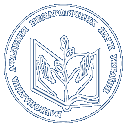- Сікора, Я.Б. (2016) Implementation of blended learning in higher education institutions Науковий вісник Ужгородського університету. Серія: «Педагогіка. Соціальна робота», 2 (39). pp. 236-239. ISSN 2524-0609
|
Text
Sikora.pdf Download (293kB) | Preview |
Abstract
The article describes the main provisions of blended learning in higher education. Proposed the concept of blended learning analysis, most of which is descriptive. On this basis, the author defines blended learning as purposeful, organized, interactive process of interaction between students and teachers that didactically optimally combines the traditional technology and online learning, based on information and communication technologies and focused on the individual needs of students, regardless of their location in space and time. Compared the notion of traditional, electronic, distance learning based on comparing the type of educational communication and the availability of e-learning, the dominant features of each. Distance Learning provides distance teacher and student training materials where the transfer takes place through any means of communication; eLearning interpreted as learning based on the use of electronic means; blended learning provides for an invariant component is a combination of classroom and distance component present in different proportions, using different kinds of training and management training activities. Investigated aspects of Blended Learning: іnstitutional – presence in higher education development strategy for electronic, including blended learning; management and technology – the organization and management of educational process, which combines traditional forms and e-learning; teaching – development of methods, models and teaching of educational process in an electronic learning environment. Determined that elements of blended learning must be reflected in the documents governing the whole educational process in higher education and documents devoted to the educational process in an electronic environment, the percentage content of ICT in the educational process within blended learning can be from 30 to 79 %. This range allows you to create a blended courses with classroom predominant component (30%-50%) and remote (50%-79%). Overview blended learning model, considered foreign researchers and proposed models that can be integrated into traditional educational process of higher education, to organize lectures rotary model «Flipped-Classroom» and model of «Self-blend»; to organize practical training model «Station Rotation»; Magistrate model for «Online Driver». An perspective directions in the study of blended learning, study and analysis methods for e-learning capabilities of social networking, cloud computing, mass public courses and develop methods for their use in the educational process.
| Item Type: | Article |
|---|---|
| Keywords: | e-learning, blended learning, distance learning, information and communication technology, higher education |
| Subjects: | Science and knowledge. Organization. Computer science. Information. Documentation. Librarianship. Institutions. Publications > 3 Social Sciences > 37 Education > 37.01/.09 Special auxiliary table for theory, principles, methods and organization of education > 37.09 Organization of instruction Science and knowledge. Organization. Computer science. Information. Documentation. Librarianship. Institutions. Publications > 3 Social Sciences > 37 Education > 378 Higher education. Universities. Academic study |
| Divisions: | Institute for Digitalisation of Education > Joint laboratory with Zhytomyr Ivan Franko State University |
| Depositing User: | професор Т.А. Вакалюк |
| Date Deposited: | 10 Apr 2017 13:26 |
| Last Modified: | 10 Apr 2017 13:26 |
| URI: | https://lib.iitta.gov.ua/id/eprint/706325 |
Downloads
Downloads per month over past year
Actions (login required)
 |
View Item |




